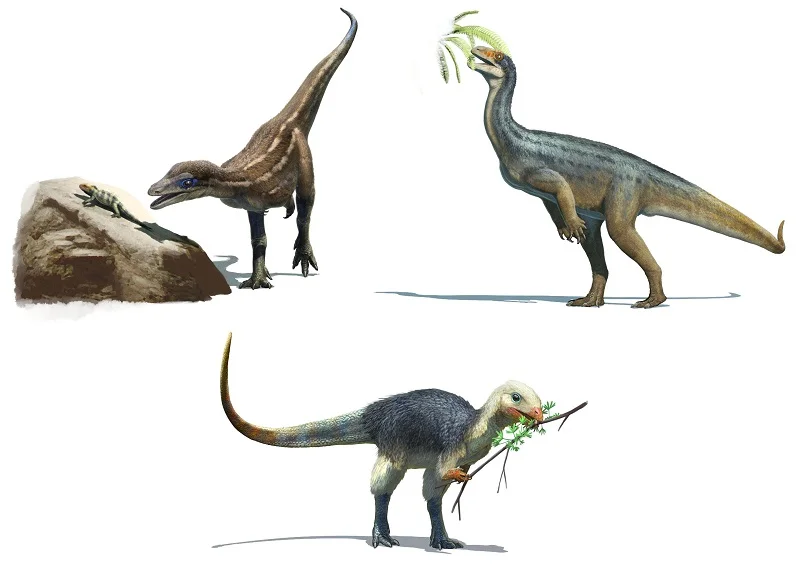According to a team of paleobiologists at the University of Bristol, the earliest dinosaurs included carnivores, omnivores and herbivores. By looking at the tooth shapes of the earliest dinosaurs and modeling their tooth function using computer simulations, experts were able to compare them to living reptiles and their diets. Results published on December 16 Science Advancesshows that many groups of herbivorous dinosaurs were originally omnivores, and that the ancestors of our famous long-necked herbivores such as Diplodocus ate meat. The ability to diversify their diet early in evolution likely explains their evolutionary and ecological success.
The first dinosaurs are enigmatic: they were much smaller than their later relatives and were overshadowed by crocodile-like reptiles for most of the Triassic. How diverse they were in terms of diet and ecology is unknown, but scientists do know that something must have happened in the Triassic that allowed the dinosaurs to survive the Triassic-Jurassic mass extinction and to adapt to its effects and become the dominant group. have a rest. mesozoic
Lead author Dr Antonio Ballell, from the University of Bristol, said: “Shortly after their origin, dinosaurs began to display an interesting variety of skull and tooth shapes. For decades, this has led paleontologists to suspect that different species had already experimented with different species, comparing them to modern lizard species. They compared each other and tried to figure out what they ate based on the similarity of their teeth.
“We investigated this by applying a series of computational techniques to measure the shape and function of early dinosaur teeth and compare them to reptiles that lived on a different diet. This involved modeling tooth shapes mathematically and simulating their mechanical response to bite forces using engineering software.”
Professor Mike Benton, co-author of the study, said: “Using this set of methods, we were able to measure how similar early dinosaurs were to modern animals, providing strong evidence for our dietary conclusions. Dinosaur theropods have pointed, curved shapes and small serrated blades that behave like modern monitor lizards. similar teeth. In contrast, the notches of ornithischians and sauropodomorphs are more similar to modern omnivores and herbivores such as iguanas.”
The study is also innovative in that it uses machine learning models to classify the earliest dinosaurs into different dietary categories based on their tooth shape and mechanics. For example, the teeth of Thecodontosaurus, a Bristol dinosaur, were well adapted to a plant-based diet.
Senior co-author Professor Emily Rayfield said: “Our analysis shows that ornithischians, a group that includes many herbivorous species such as horned dinosaurs, armored ankylosaurs and platypus dinosaurs, began as omnivores. And one more interesting fact. The result is that they were the ancestors of vegetarian long-necked sauropods such as Diplodocus. that the earliest sauropodomorphs were carnivores, suggesting that, contrary to traditional hypotheses, herbivory was not an ancestor of either of these two lineages, and that the diets of early dinosaurs were quite diverse.
Dr Ballell concludes: “It seems that one of the things that made the early dinosaurs special was that they evolved different diets during the Triassic, and we think this may be key to their evolutionary and ecological success.”
Source: Port Altele
